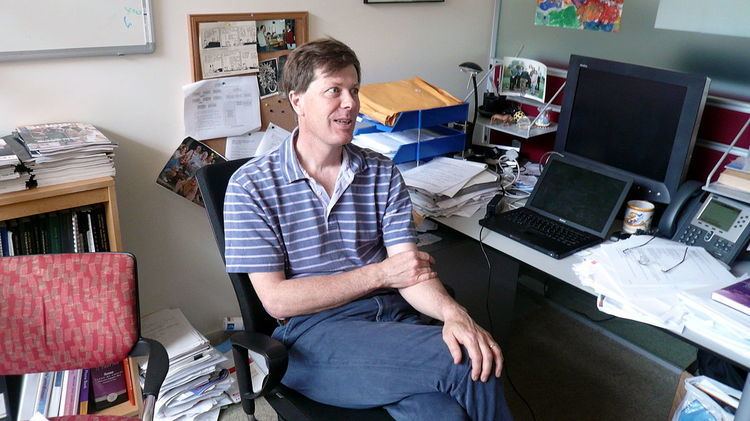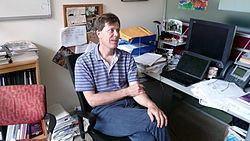Nationality British | Name Richard Durbin | |
 | ||
Born Richard Michael Durbin 30 December 1960 (age 64) ( 1960-12-30 ) Institutions University of CambridgeLaboratory of Molecular BiologyHarvard UniversityWellcome Trust Sanger InstituteHighgate SchoolKing's College, Cambridge Thesis Studies on the development and organisation of the nervous system of Caenorhabditis elegans (1987) Other notable students Sean EddyHeng LiAlex Bateman(postdocs) People also search for Sean Eddy, Ewan Birney, John Graham White | ||
Doctoral advisor John Graham White | ||
Richard Michael Durbin, FRS, born (1960-12-30) 30 December 1960 , is a British computational biologist, Senior Group Leader at the Wellcome Trust Sanger Institute and an Honorary Professor of Computational genomics at the University of Cambridge.
Contents

Education
Durbin was educated at The Hall School Hampstead and Highgate School in London. After competing in the 1978/9 International Mathematical Olympiad, he went on to study at the University of Cambridge graduating in 1982 with a first class honours degree on the Cambridge Mathematical Tripos. After graduating, he continued to study for a PhD at St John's College, Cambridge studying the development and organisation of the nervous system of Caenorhabditis elegans whilst working at the Laboratory of Molecular Biology (LMB) in Cambridge, supervised by John Graham White.
Research
Durbin's early work included developing the primary instrument software for one of the first X-ray crystallography area detectors and the MRC Biorad confocal microscope, alongside contributions to neural modelling.
He then led the informatics for the Caenorhabditis elegans genome project, and alongside Jean Thierry-Mieg developed the genome database AceDB, which evolved into the WormBase web resource. Following this he played an important role in data collection for and interpretation of the human genome sequence.
He has developed numerous methods for computational sequence analysis. These include gene finding (e.g. GeneWise) with Ewan Birney and Hidden Markov models for protein and nucleic acid alignment and matching (e.g. HMMER) with Sean Eddy and Graeme Mitchison. A standard textbook Biological Sequence analysis coauthored with Sean Eddy, Anders Krogh and Graeme Mitchison describes some of this work. Using these methods Durbin worked with colleagues to build a series of important genomic data resources, including the protein family database Pfam, the genome database Ensembl, and the gene family database TreeFam.
More recently Durbin has returned to sequencing and has developed low coverage approaches to population genome sequencing, applied first to yeast, and has been one of the leaders in the application of new sequencing technology to study human genome variation. Durbin currently co-leads the international 1000 Genomes Project to characterise variation down to 1% allele frequency as a foundation for human genetics.
Awards and honours
Durbin was a joint winner of the Mullard Award of the Royal Society in 1994 (for work on the confocal microscope), won the Lord Lloyd of Kilgerran Award of the Foundation for Science and Technology in 2004, and was elected a Fellow of the Royal Society (FRS) in 2004 and a member of the European Molecular Biology Organization (EMBO) in 2009. Durbin's certificate of election for the Royal Society reads:
Personal life
Durbin is the son of James Durbin and is married to Julie Ahringer, a scientist at the Gurdon Institute. They have two children.
